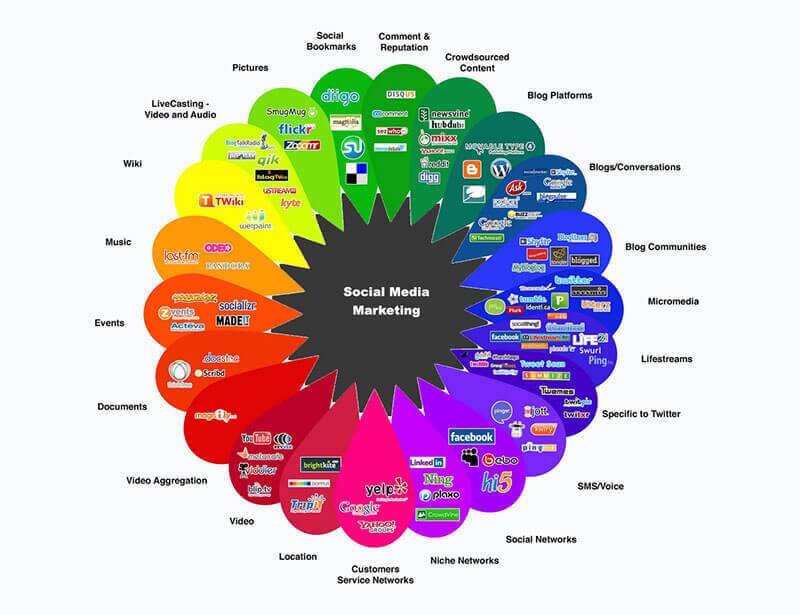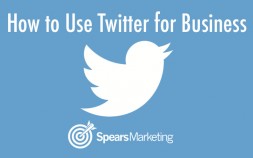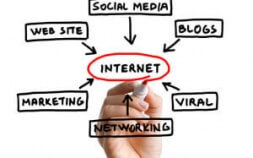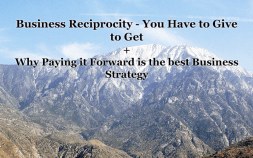When it comes to social media, frustration is a word that often comes to mind for many companies new to the medium and to those who have yet to see a return from their involvement.
How to Evaluate Your Social Media Campaign
The problem is two-fold. First, establishing a social media presence takes time and continual effort. You have to be consistent in your involvement with social media and remember that returns never happen overnight. Secondly, you have to make sure that you are using social networking in a way that makes sense for your business and industry.
If you are not sure, ask yourself these simple questions:
1. Are you Using the Correct Platform?
First, remember that there are a variety of social platforms and networks for you to consider – most notably for local businesses are Facebook, Twitter, and YouTube. Further, within these platforms, there exist variations on the theme. For example, in Facebook, you can have a “Page,” a “Group,” or a “Community.” Each variation has its own set of tools, purposes, and capabilities. In addition, you may decide to participate in several social media platforms at the same time. For example, if you have a fitness center, you may want to use your YouTube channel to publish videos on how to perform certain exercises, or tape specific classes you offer there, while using Facebook to build a sense of community through candid photos, listings of hours, available classes, and upcoming events.
2. Have you Scrapped Past Attempts?
You also need to remember that whatever you take on has to be maintained and updated regularly. This can take up valuable time and human resources. Consistency is key here. If you don’t think you will be able to maintain various platforms (or you have already started and stopped using a platform) be sure to erase or delete those accounts. Otherwise, you stand the risk of eroding your brand value when a customer (either current or potential) stumbles across your forgotten account. Instead, make sure that what you have is the best it can be and do away with anything that you are not actively using and promoting.
3. Do You Provide the Info Your Audience Wants?
Ask yourself what it is that your audience would want to read, not what you want to tell them. Providing discounts or having giveaways can be useful, but you have to have more substance than that. Consider posting facts about your company, the brand, or its products. Think of the tidbits of information you encounter everyday that make you stop and say, “Really?” Examples include fun facts about how long you have been in business, what happens “behind the scenes”, why your business operates as it does (e.g. why spin class was canceled on Tuesdays, why you don’t serve chocolate bagels, why you buy local, why legal documents are presented in blue card stock), etc.
4. Are You Listening to Your Audience?
Likewise, are you listening to your audience? When they make a post, do you respond? Do you stay on top of when your company is mentioned on other websites, blogs, social media, etc., and make relevant comments to that affect (on that site and yours)? Social media has developed because of the continued interaction it affords. This is what web 2.0 is all about. Its purpose is not to simply broadcast, but rather give people a voice in things they would otherwise not be privy to.
5. Do You Allow Your Customers a Voice?
Similarly, make sure that you give your audience a voice. Ask open-ended questions, run surveys and polls, include them in new product decisions, etc. – the more things like this you do, the more valued your audience will feel. A two-way street of communication is imperative, as interaction is the most fundamental part of a successful social media campaign. If you miss out on this, you’re already out of the game.
Social Media can be a key part of growing your business and brand to attract local consumers. Local internet marketing isn’t just about having a website, it includes being findable in multiple places when local consumers are looking for your product or service. A local search marketing firm such as Spears Marketing can help you determine the best route for your online marketing plan.
The Power of Social Networking
Web 2.0 and Social media. The graphic above lists some of the many social networking sites. The question to ask about this new media is it the greatest thing since sliced bread or just a passing fad? Check out these stats:
- Social media has overtaken porn as the number one activity on the web.
- 1 out of every 8 couples in the U.S. met through social media.
- Facebook has over 500 million users.
- YouTube is the second most used search engine after Google.
- 80% of companies use social media for recruiting.
- Twitter search gives instantaneous results that don’t rely on search engine optimization.
Still think it’s a fad? More like a fundamental shift in how society communicates. If your business isn’t utilizing these social media tools, you’re missing a huge opportunity to interact with current clients, and the ability to attract new ones.
Customers are more likely to trust a peer review or social bookmark on your product or service than they are a traditional advertisement for the same product or service.
There isn’t a small business or local service provider who can’t benefit from a strong social networking presence. Erik Qualman, who wrote the book on the subject, as well as produced the following video, has dubbed this phenomenon “Socialnomics.”
Is your business leveraging the power of social networking?
Leave a comment below to tell us how you’re interacting and gaining new customers with this powerful tool.
Small Business & Social Media
Social media is four things: marketing, public relations, customer service, and entertainment. But most importantly, it’s a communication tool.
It’s always annoying when a client asks what the ROI of using Facebook, Twitter, Google+, or any other social media tool is. My response is always “what’s the ROI of your phone or email?” You can’t measure either of those since they are invaluable and essential tools for running your business.
Social media should be seen in the same way. It’s an absolute necessity. Not something to consider doing if there’s a return on investment, or if you get around to it. But just as important as answering the phone or responding to email.
So how are other small business owners using social media, and how much time & money are they spending on it?
Vertical Response, an email marketing company, recently took a survey to find out, and they published a fantastic infographic detailing it, and have graciously allowed us to share it below.

But you’re probably asking: “Isn’t social media is free?”
Well, it may be free to sign up for an account and to use, but it takes time to set up, learn, implement, and become proficient at; either your time or someone you hire to manage it for you.
If time is money, then you need to be able to maximize and leverage your time, even when using social media. Here’s a couple tools that can help you do just that.
The first one is called Hoot Suite. It’s a social media dashboard that allows you to manage all your social media accounts in one place: Facebook, Twitter, Linkedin, Google+, Instagram, YouTube, and more. You can monitor all your accounts, track your mentions, respond to questions and conversations, schedule tweets, status updates, and much more.
The second social media productivity tool is Buffer. It allows you to schedule updates at pre-determined intervals for your primary social media accounts, Facebook, Twitter, Linkedin, Pinterest, Google+. The great thing about using Buffer is you can set specific times and days for tweets and updates to go out, that way you can schedule them all at once, but won’t overwhelm your follows with tons of updates in a short period of time.
Remember, social media is a three-spoked wheel: 1/3 marketing, 1/3 customer service, 1/3 public relations. Make sure you’re using it for all 3 parts so that your wheel will roll smoothly.
Are you using any social media tools to help leverage your time?
Social Media for Business
Social media, social networking, social bookmarking, social branding, social marketing. These are all terms used to describe web 2.0 interactions. Facebook, Twitter, Linked In, You Tube, MySpace, Digg, Stumble Upon, Flickr: All companies who specialize in this online social interaction.
Social media has revolutionized the web. The internet is no longer a one-way communication channel. Information now flows in two directions, in complete transparency. This is great news for small businesses, as it allows you to communicate more directly with your customers, and get real-time feedback on your products and services.
Social Media Marketing is the utilization of social networks, bookmarks, online communities, blogs, forums, wikis or any other collaborative internet form of media for marketing, sales, public relations and customer service.
In the context of internet marketing, social media refers to a collective group of web properties whose content is primarily created and published by users, not direct employees of the property.
Benefits of Social Media Marketing
Social Media is an invaluable tool for your business. It can create a virtual web of social interaction surrounding your business, attracting new customers daily. Many of these networks and communities interact with each other, giving you an even greater overlap and network of distribution.
Social Media Marketing will provide another whole dimension to your marketing strategy and let you reach demographics who were previously unaware of you.
Some other benefits of social marketing include:
- Traffic From Social News Sites – The traditional news media is dead. In today’s technologically advanced age, news is published as it happens, and social media allows anyone to broadcast it. When content from your business is broadcast on a social news sharing site, it reaches 1000’s of people instantly, driving traffic and potential customers to your website.
- Brand Awareness – When your business utilizes a Facebook “fan page” or a Twitter account, any content listed will automatically link back to your website. This instantly opens your business up to potential customers who might never have heard of you without the power of social networking.
- Backlinks – When you interact in a social networking environment, a link to your website should always be included. This back-linking increases your search engine rank and potential traffic.
- Tagging and Bookmarking – When surfing the web, if someone finds a website or piece of content he likes, it can be “tagged” or “bookmarked” for others within his social network to read. If someone with many connections tags or bookmarks your website or off-site content, it can mean 1000’s of new visitors to your website, almost instantly.
What if there was a website that allowed you to post content for free, and automatically distributed it to your entire social network. On top of that, this site allowed you to receive instant feedback from them about your product or service, and when they do, it distributes your information to all of their contacts as well. Impossible? No, just Facebook.
When you have a business page on Facebook, you can then invite customers to “like” your page. When they do, it automatically shows up to all their social connections that they like your business. There are over 500 millions active users on Facebook, and the average user has 130 friends. For the local business owner, this means instant visibility to more potential customers than ever previously possible.
Still doubt the power of social media? Check out the video below to see how powerful it really can be!
Social Media Revolution
You’ve heard it before, social media is important. But what if you’re in a boring industry where your customers don’t care if you have a Twitter account, are on Facebook, or share content on Google+? That’s what you’re thinking, right? If you’re thinking it, your competitors are probably thinking it too…except for those who aren’t. And those competitors who are using these tools to grow their business are stealing your customers, because they’re willing to do what you aren’t.
Every day potential customers are talking on social media, asking questions of family, friends, and followers about their likes and dislikes, what products, services, and businesses they recommend, where they should shop, and who they should stay away from.
What if your business is mentioned, either positively or negatively? Are you monitoring the conversation that customers and potential customers are having about your business?
Social media is a tool. Just like the telephone is a tool. Or email. Or a hammer. It’s not so important what the tool is, but how you use it. If potential customers are calling your office, but you don’t answer the phone, it’s an ineffective tool, and it’s costing you business by not using it. If potential customers are asking on Twitter about a service you provide in your town, but you aren’t listening, you’re losing that business.
In the past few years, social media has come a long way, especially in how it can be used for business. One of the first people to realize the power of social networking was author Erik Qualman, who wrote a fantastic book on the topic, titled appropriately, Socialnomics.
Over the past several years, Qualman has created several highly influential videos dealing with the most recent statistics of social media and it’s relation to business and the marketplace. It should probably come as no surprise, but 2011 has seen a greater adoption of this tool by both individuals and companies than ever before.
Watch the video below to see statistically just how much of an impact social media has and continues to exert on all areas of life.
Think about it. The only constant in life is change. That goes for business as well. When the personal computer was first introduced, it was revolutionary. When the cell phone first came out and gained broad acceptance, it changed business. Social media is no different. There are those who run from change and the new tools required to grow and adapt, and there are others who will embrace it. Those who embrace change, thrive. Those who hide from it, get swallowed up by it and die.
Which group are you in?



